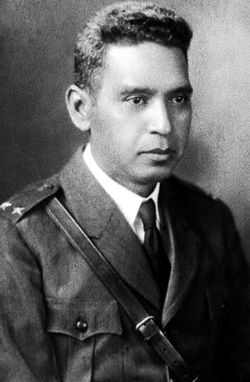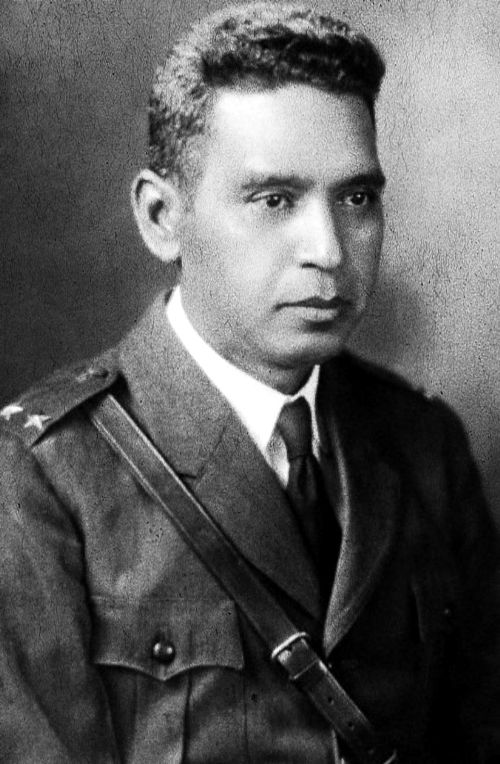He was President of El Salvador for almost 12 years and ruled the nation with an authoritarian one party state lead by the fascistic and anti-communist National Pro Patria Party. His rule was marked by rigged and fraudulent elections and brutality, most notably the 1932 Salvadoran peasant massacre, known as La Matanza ("The Massacre"). Under his rule, El Salvador joined the Allied Powers during World War II on 8 December 1941 following the Bombing of Pearl Harbor. He also benefited the nation through infrastructure projects such as the Pan-American Highway and the Cuscatlán Bridge. He also established the Central Reserve Bank, but he was eventually forced to resign on 9 May after a military mutiny the month prior and massive civil unrest.
He was President of El Salvador for almost 12 years and ruled the nation with an authoritarian one party state lead by the fascistic and anti-communist National Pro Patria Party. His rule was marked by rigged and fraudulent elections and brutality, most notably the 1932 Salvadoran peasant massacre, known as La Matanza ("The Massacre"). Under his rule, El Salvador joined the Allied Powers during World War II on 8 December 1941 following the Bombing of Pearl Harbor. He also benefited the nation through infrastructure projects such as the Pan-American Highway and the Cuscatlán Bridge. He also established the Central Reserve Bank, but he was eventually forced to resign on 9 May after a military mutiny the month prior and massive civil unrest.
Sponsored by Ancestry
Advertisement
Advertisement


